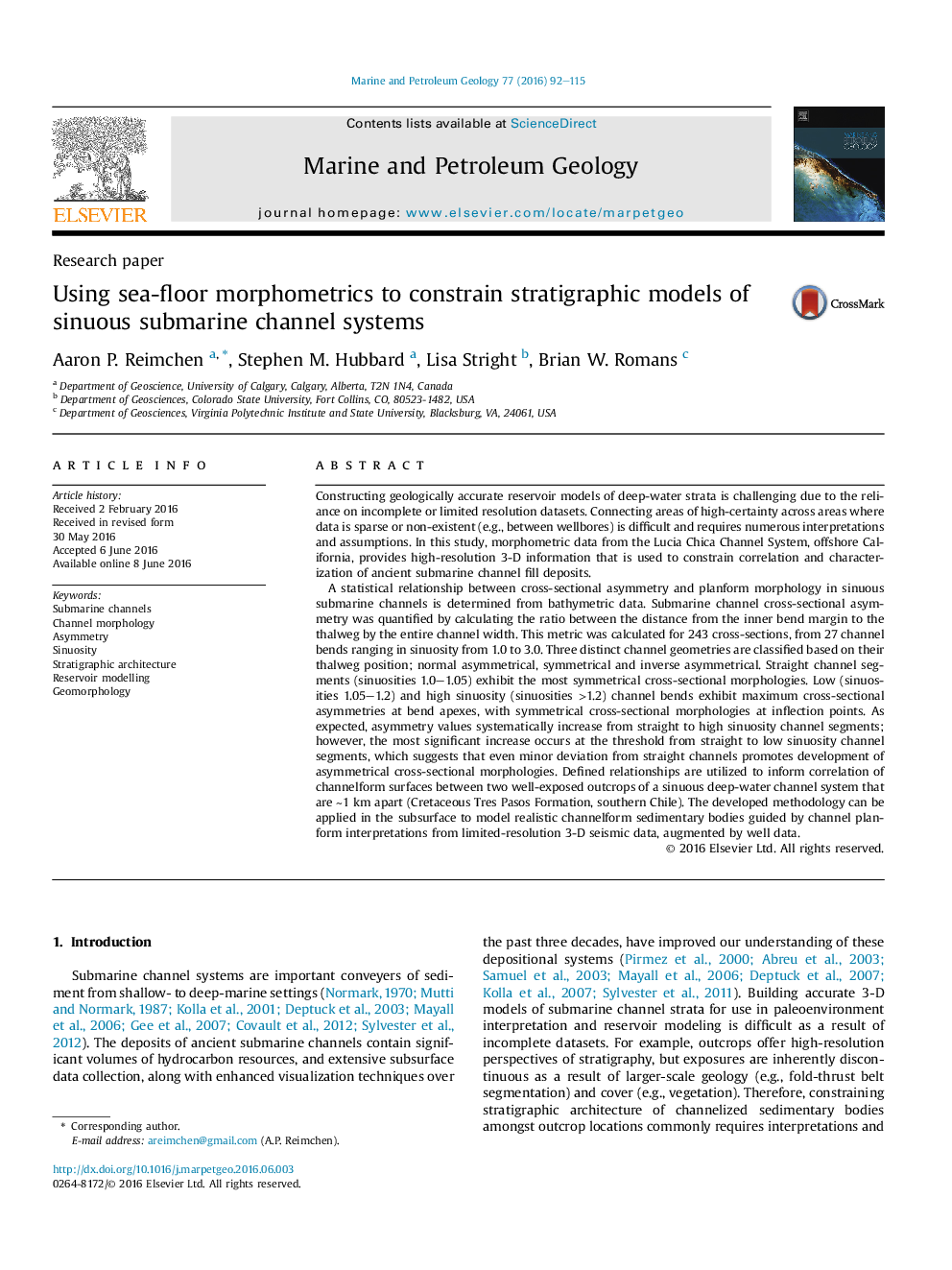| کد مقاله | کد نشریه | سال انتشار | مقاله انگلیسی | نسخه تمام متن |
|---|---|---|---|---|
| 6434533 | 1637150 | 2016 | 24 صفحه PDF | دانلود رایگان |
- Relationship between submarine channel geometry and planform morphology is presented.
- Channel cross-sectional asymmetry is proportional to bend sinuosity.
- Methodology can be applied to model realistic channelform sedimentary bodies.
Constructing geologically accurate reservoir models of deep-water strata is challenging due to the reliance on incomplete or limited resolution datasets. Connecting areas of high-certainty across areas where data is sparse or non-existent (e.g., between wellbores) is difficult and requires numerous interpretations and assumptions. In this study, morphometric data from the Lucia Chica Channel System, offshore California, provides high-resolution 3-D information that is used to constrain correlation and characterization of ancient submarine channel fill deposits.A statistical relationship between cross-sectional asymmetry and planform morphology in sinuous submarine channels is determined from bathymetric data. Submarine channel cross-sectional asymmetry was quantified by calculating the ratio between the distance from the inner bend margin to the thalweg by the entire channel width. This metric was calculated for 243 cross-sections, from 27 channel bends ranging in sinuosity from 1.0 to 3.0. Three distinct channel geometries are classified based on their thalweg position; normal asymmetrical, symmetrical and inverse asymmetrical. Straight channel segments (sinuosities 1.0-1.05) exhibit the most symmetrical cross-sectional morphologies. Low (sinuosities 1.05-1.2) and high sinuosity (sinuosities >1.2) channel bends exhibit maximum cross-sectional asymmetries at bend apexes, with symmetrical cross-sectional morphologies at inflection points. As expected, asymmetry values systematically increase from straight to high sinuosity channel segments; however, the most significant increase occurs at the threshold from straight to low sinuosity channel segments, which suggests that even minor deviation from straight channels promotes development of asymmetrical cross-sectional morphologies. Defined relationships are utilized to inform correlation of channelform surfaces between two well-exposed outcrops of a sinuous deep-water channel system that are â¼1Â km apart (Cretaceous Tres Pasos Formation, southern Chile). The developed methodology can be applied in the subsurface to model realistic channelform sedimentary bodies guided by channel planform interpretations from limited-resolution 3-D seismic data, augmented by well data.
Journal: Marine and Petroleum Geology - Volume 77, November 2016, Pages 92-115
